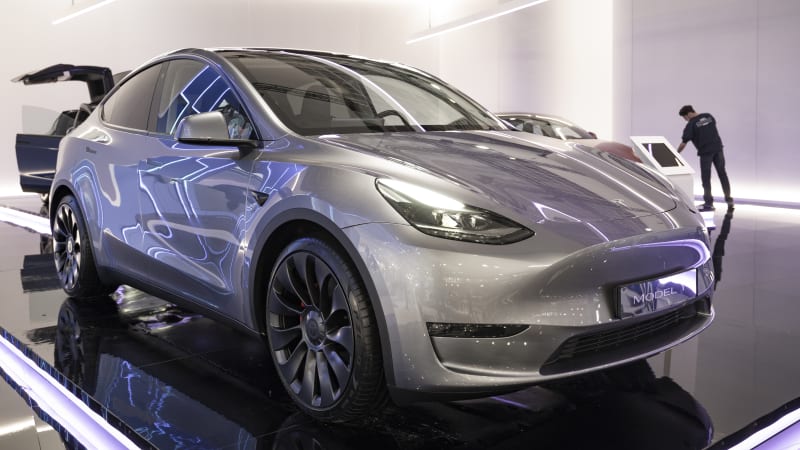Tesla is gunning for America's top-selling SUVs

This much is clear from Tesla Inc.’s fifth price cut this year: Elon Musk is dead set on seizing much more of America’s SUV market.
Tesla’s Model Y already became one of the three best-selling sport utility vehicles in the U.S. last year. That was remarkable considering the starting price of the Model Y was more than double the Toyota RAV4 and Honda CR-V, the market’s perennial favorites.
Bloomberg has been tracking what Tesla charges for its models relative to the industry average since the beginning of this year (see the earlier reports here and here). Read on for four storylines that have emerged from the company’s latest cuts.
The Model Y drop is transformative
A 24% price decline in three months is practically unheard of for such a high-volume vehicle. The closest analog may be the Model T, which Ford made dramatically cheaper in the 1920s by way of the moving assembly line.
The Model Y now starts at $49,990, or $42,490 for those who qualify for the federal incentive. That’s about $5,300 less than the average price paid for a new vehicle in the U.S. during the month of March, according to Edmunds.
Tesla’s top models have never been cheaper
The base versions of the Model 3 and Y have never been cheaper relative to the average new vehicle selling price. The Model S and X were slightly less expensive on this basis in late 2020.
The Standard Range Model 3 now starts at $41,990. It’s eligible for a $3,750 federal tax credit as of April 18, which would bring the price to $38,240 for eligible consumers. That’s considerably less than the BMW 3 Series — a model it’s often measured up against — which starts at around $44,000.
Look out for refreshes
Tesla’s constantly fluctuating prices are unique in the auto industry, although as Bloomberg established early this year, they tend to track closely with the broader U.S. market. The base Model 3, for example, rarely drifted far from the U.S. average the last couple years, while the Model S typically went for about twice as much.
The only time prices veered as far from these trends as they have recently was in late 2020, just before Tesla redesigned the interiors of the Model S and X. Immediately following the release of the new versions, prices jumped.
It’s not clear whether that dynamic will repeat with the Model 3 and Y, which Reuters has reported will be refreshed later this year. The Model S and X refresh coincided with supply shortages that drove up prices industrywide. As those disruptions have eased, so have prices.
Bad news for other automakers?
Analysts disagree on whether Tesla’s price cuts are indicative of weakening demand or part of a long-term strategy to expand its addressable market while cutting costs. Regardless, the markdowns are putting pressure on other carmakers that already were having issues making money from manufacturing electric vehicles.
Tesla has started a price war between battery and internal combustion engine cars, and that battle has only just begun.






